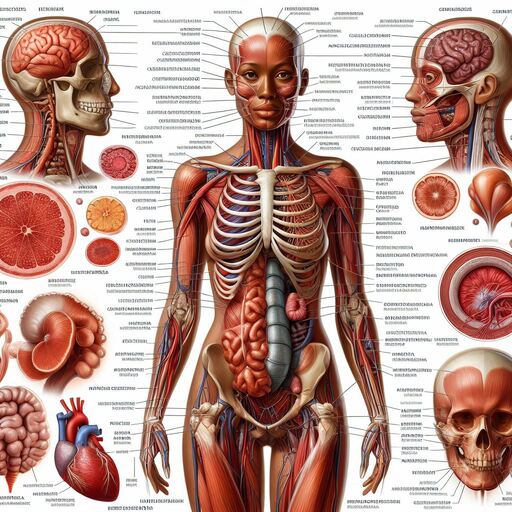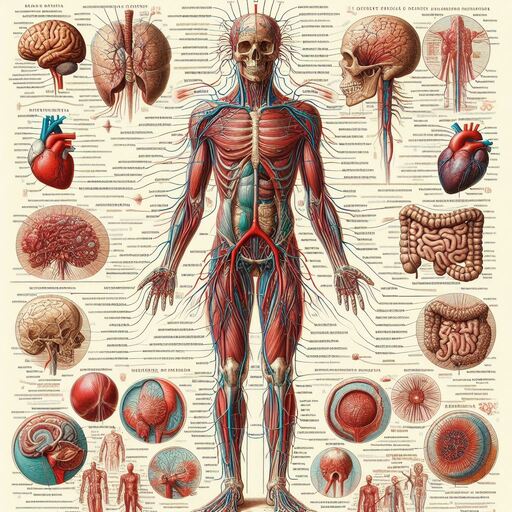Unveiling the Mysteries Exploring Human Anatomy
Unveiling the Mysteries Exploring Human Anatomy
Anatomy, the study of the structure of organisms and their parts, holds a profound fascination for scientists and medical professionals alike. Delving into the intricate details of human anatomy reveals a complex yet beautifully organized system that sustains life. From the smallest cells to the largest organs, every component plays a crucial role in maintaining the body’s functions. In this article, we embark on a journey to unveil the mysteries of human anatomy, exploring its wonders and significance.
Unveiling the Mysteries Exploring Human Anatomy
The Foundation of Understanding
To comprehend human anatomy, one must first grasp its foundational principles. The human body is composed of various systems, each with unique structures and functions. These systems work synergistically to ensure the body’s survival and well-being. From the skeletal system, which provides structural support and protection, to the cardiovascular system, responsible for circulating blood and nutrients, anatomy offers insights into the interconnections that sustain life.
At the core of human anatomy lies cellular biology. Cells are the building blocks of all living organisms, and each cell type possesses specific structures tailored to its function. The study of cellular anatomy illuminates how cells interact and collaborate within tissues and organs. Through microscopy and advanced imaging techniques, scientists can observe cellular structures in unprecedented detail, unraveling the complexities of human biology at a microscopic level.
Unveiling the Mysteries Exploring Human Anatomy
Navigating the Human Body
Exploring human anatomy is akin to navigating a vast landscape filled with intricate structures. Let us embark on a guided tour through some key anatomical systems:
- Skeletal System: The skeleton serves as the body’s framework, supporting muscles and organs while protecting delicate tissues. Comprised of bones, joints, and connective tissues, the skeletal system enables movement and provides essential mineral storage.
- Muscular System: Muscles are responsible for movement, from the rhythmic beating of the heart to the precise contractions required for basic activities. Understanding muscle anatomy unveils the mechanics behind human motion and the intricacies of muscle function.
- Nervous System: The nervous system coordinates bodily activities by transmitting electrical impulses. This complex network includes the brain, spinal cord, and peripheral nerves, orchestrating everything from sensory perception to voluntary and involuntary actions.
- Cardiovascular System: The heart, blood vessels, and blood collectively form the cardiovascular system, which transports oxygen, nutrients, and waste products throughout the body. By studying cardiovascular anatomy, researchers gain insights into cardiovascular diseases and treatments.
- Respiratory System: Responsible for exchanging oxygen and carbon dioxide, the respiratory system comprises the lungs and airways. Exploring respiratory anatomy elucidates the mechanisms behind breathing and gas exchange.
Clinical Applications and Innovations
Beyond academia, a profound understanding of human anatomy underpins medical practice. Healthcare professionals rely on anatomical knowledge to diagnose illnesses, perform surgeries, and develop treatments. Innovations in medical imaging, such as computed tomography (CT) scans and magnetic resonance imaging (MRI), allow for non-invasive visualization of internal structures, revolutionizing anatomical study and clinical practice.
Anatomy also serves as a gateway to interdisciplinary research. By integrating anatomical data with genetics, physiology, and biochemistry, scientists gain holistic perspectives on human health and disease. This integrative approach drives advancements in personalized medicine, enabling tailored treatments based on individual anatomical variations.
Unveiling the Mysteries Exploring Human Anatomy
Cultural and Historical Perspectives
Throughout history, the study of anatomy has evolved alongside cultural beliefs and scientific discoveries. Ancient civilizations practiced rudimentary forms of anatomical observation, laying the groundwork for modern anatomical science. Notably, the Renaissance era witnessed a resurgence of anatomical studies, with pioneers like Leonardo da Vinci producing detailed anatomical drawings.
In contemporary society, anatomical knowledge permeates popular culture and art, inspiring awe and curiosity. Medical illustrators and anatomists collaborate to create visually captivating representations of the human body, bridging the gap between science and aesthetics.
Conclusion
Unveiling the mysteries of human anatomy transcends academic inquiry; it reflects our innate curiosity about life and our quest for understanding. From the microscopic intricacies of cells to the integrated functioning of organ systems, anatomy reveals the blueprint of human existence. As technology advances and interdisciplinary collaborations flourish, the study of anatomy continues to illuminate new frontiers, offering insights that shape healthcare, scientific inquiry, and our collective appreciation of the marvels of life.
Unveiling the Mysteries Exploring Human Anatomy

